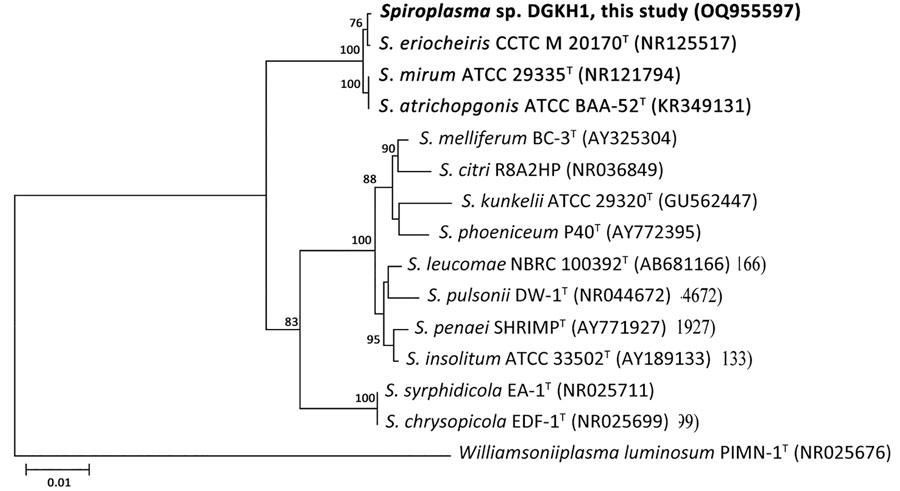Volume 30, Number 1—January 2024
Research Letter
Rare Spiroplasma Bloodstream Infection in Patient after Surgery, China, 2022
Figure

Figure. Neighbor-joining phylogenetic tree based on 16S rRNA gene sequences from a postsurgery patient with a blood infection, China, 2022. Tree shows the phylogenetic relationship among the strain DGKH1 from this study (boldface) and closely related species of Spiroplasma. Williamsoniiplasma luminosum PIMN-1T (GenBank accession no. NR025676) was used as an outgroup in the tree; GenBank accession numbers are provided for all sequences. Bootstrap values (expressed as percentages of 1,000 replications) >70% are shown at the branch points. Superscript T indicates type strains. Scale bar indicates substitutions per nucleotide position.
1These authors contributed equally to this article.
Page created: November 24, 2023
Page updated: December 20, 2023
Page reviewed: December 20, 2023
The conclusions, findings, and opinions expressed by authors contributing to this journal do not necessarily reflect the official position of the U.S. Department of Health and Human Services, the Public Health Service, the Centers for Disease Control and Prevention, or the authors' affiliated institutions. Use of trade names is for identification only and does not imply endorsement by any of the groups named above.